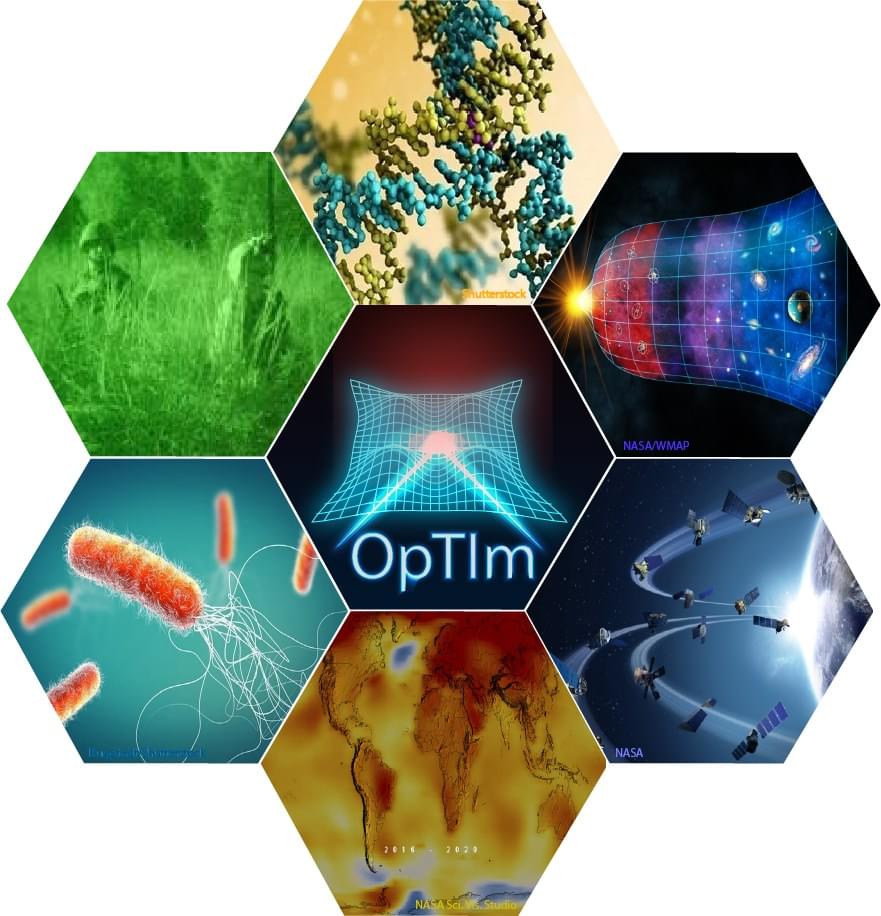
Category: space – Page 479


Patchy Proton Aurora at Mars: A Global View of Solar Wind Precipitation Across the Martian Dayside From EMM/EMUS
An extraordinary phenomenon taking over the Red Planet.
NASA’s MAVEN (Mars Atmosphere and Volatile Evolution) mission and the United Arab Emirates’ Emirates Mars Mission (EMM) revealed combined observations of proton aurora at Mars. It turns out that aurora can actually get patchy over the Martian atmosphere.
The study was published in the journal Geophysical Research Letters.
The United Arab Emirates’ EMM found that fine-scale structures covered the proton aurora during the entire day side of Mars.
MAVEN discovered proton aurora in 2018. They form when the solar wind interacts with the upper atmosphere of Mars. Previously, MAVEN and ESA’s (the European Space Agency) Mars Express mission revealed through regular observations that this type of aurora was evenly distributed across the Martian hemisphere.
However, EMM’s observations were quite different-this time, proton aurora seemed dynamic and variable. The researcher’s called this patchy proton aurora\.

7+ Amazing Facts About Dubai’s Palm Islands
The list of unique architectures in the city keeps growing.
The city has showcased its ability to take on architectural challenges by completing the Palm Jumeirah and keeps unveiling tiny projects along the way, such as the world’s largest Ferris Wheel. So, it is not exactly a moonshot when Dubai thinks of building a Moon styled resort as well.
## What will the resort offer?
Although the details of the project are still scanty, the ambitious project is expected to have an overall height of 735 feet (224 m). Occupying an area of 10 acres or 435,600 sq feet, the resort promises an authentic “lunar colony”.
We do not quite exactly know what that means as of now but reports suggest that the area will offer standard hospitality services such as hotel rooms, wellness center, nightclub, a meeting place and a moon shuttle\.

Our new Optomechanical Thermal Imaging program seeks to enable quantum-level IR detection at room temperature
If successful it would revolutionize battlefield surveillance, night vision, and terrestrial & space imaging plus many commercial applications: https://www.darpa.mil/news-events/2022-09-02

Astronomers discover a swarm of galaxies orbiting a hyper-luminous galaxy
Using the Very Large Telescope and the radio telescope ALMA in Chile, a team of astronomers including researchers from the Niels Bohr Institute has discovered a swarm of galaxies orbiting the surroundings of a hyper-luminous and vigorously star-forming galaxy in the early universe. The observation provides important clues to how exceptionally bright galaxies grow, and to how they evolve into energetic quasars, beaming light across most of the observable universe.

More Major Updates From James Webb Telescope and Cool Discoveries
Get a Wonderful Person Tee: https://teespring.com/stores/whatdamath.
More cool designs are on Amazon: https://amzn.to/3wDGy2i.
Alternatively, PayPal donations can be sent here: http://paypal.me/whatdamath.
Hello and welcome! My name is Anton and in this video, we will talk about new updates from James Webb Space Telescope.
Links:
https://arxiv.org/abs/2207.11658
https://webb.nasa.gov/
https://arxiv.org/abs/2208.14990
JWST captures the previously spotted Einstein Ring Galaxy SPT-S J041839-4751.8 with MIRI
byu/Spaceguy44 injameswebb
https://www.sciencealert.com/astronomers-discover-clouds-of-…ailed-star.
https://arxiv.org/abs/2209.00620
https://exoplanets.nasa.gov/news/1670/nasas-roman-mission-wi…wn-dwarfs/
R136a1 updates: https://youtu.be/JJYTqn9uQpI
Most distant star: https://youtu.be/nuWuTTHOAOo.
#jwst #jameswebb #jameswebbspacetelescope.
Support this channel on Patreon to help me make this a full time job:
https://www.patreon.com/whatdamath.
Bitcoin/Ethereum to spare? Donate them here to help this channel grow!
bc1qnkl3nk0zt7w0xzrgur9pnkcduj7a3xxllcn7d4
or ETH: 0x60f088B10b03115405d313f964BeA93eF0Bd3DbF
Space Engine is available for free here: http://spaceengine.org.
Enjoy and please subscribe.
Twitter: https://twitter.com/WhatDaMath.

James Webb Space Telescope captures Orion Nebula with ‘breathtaking’ details
Hubble walked so that JWST could run.
The James Webb Space Telescope (JWST) has captured the most detailed and painstakingly sharp images ever taken of the inner region of the Orion Nebula, known as the “picture book of star formation.” The stellar nursery is situated in the constellation Orion, 1,350 light-years away from Earth.
NASA, ESA, CSA, PDRs4All ERS Team; image processing Salomé Fuenmayor.
The images were obtained as part of the Early Release Science program and involved more than 100 scientists in 18 countries, in a collaboration called PDRs4All, according to a release. The team, which comprised institutions including the French National Center for Scientific Research (CNRS), Western University in Canada, and the University of Michigan, started the project in 2017 and waited for five long years to get the data.
The ESA’s Solar Orbiter records a solar “switchback” proving they exist
The new data could help explain why and how solar wind accelerates at great speeds across the solar system.
The European Space Agency’s Solar Orbiter probe made the first-ever remote sensing observation of a solar “switchback”, according to a blog post from the agency.
The ‘first evidence of a switchback in the solar corona’
Source: ESA/ATG medialab.
The new data gathered by the mission sheds new light on a mysterious phenomenon that had only been hypothesized until now. It could help explain how solar wind is propelled across the solar system at incredibly fast speeds.